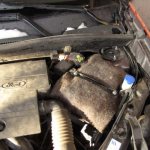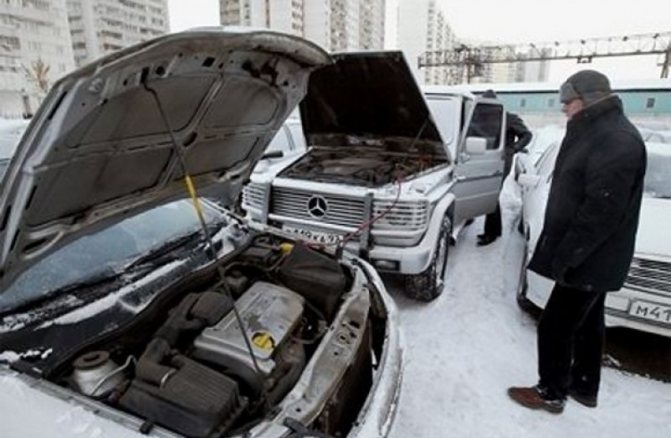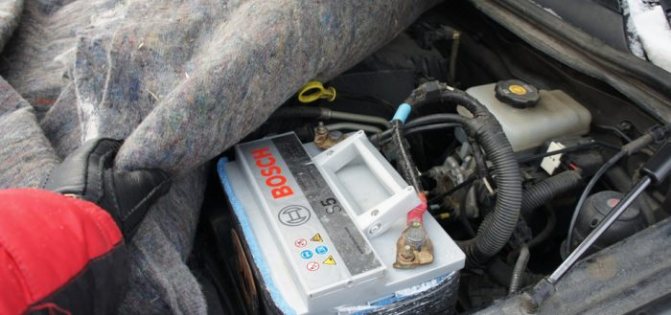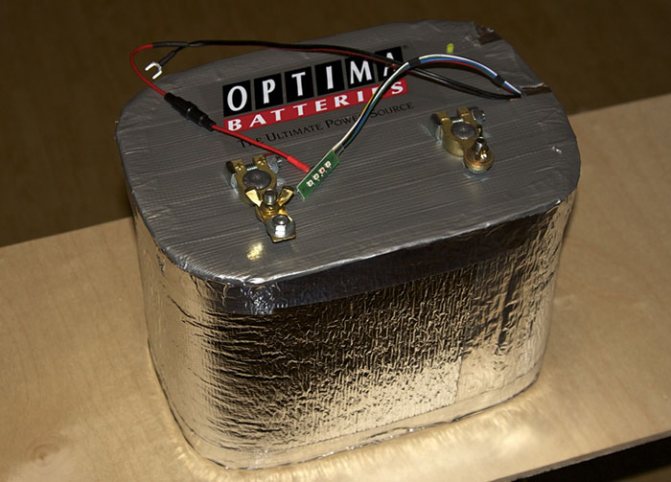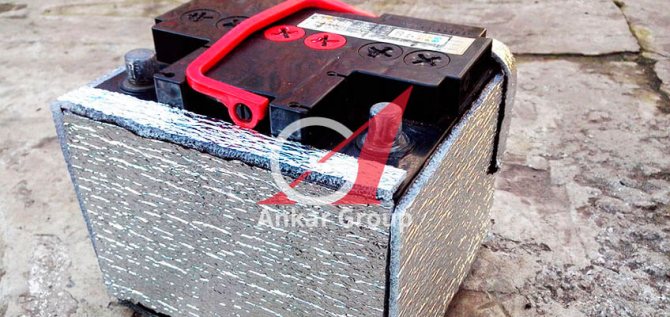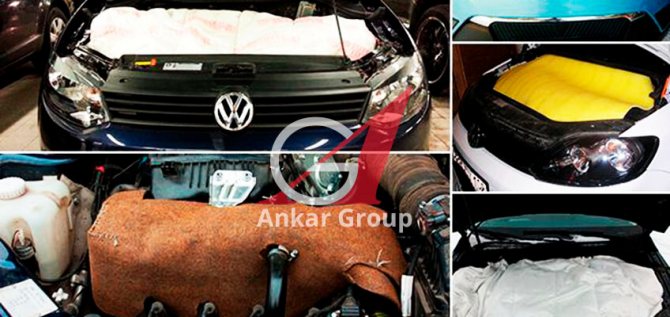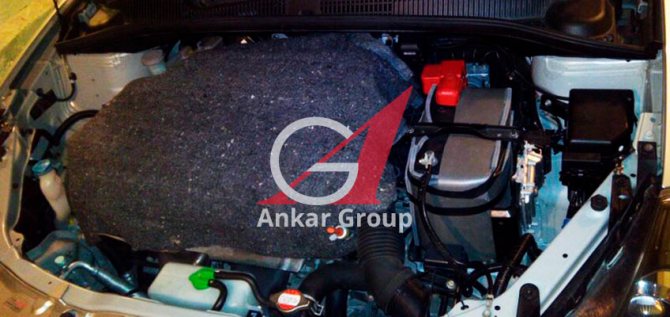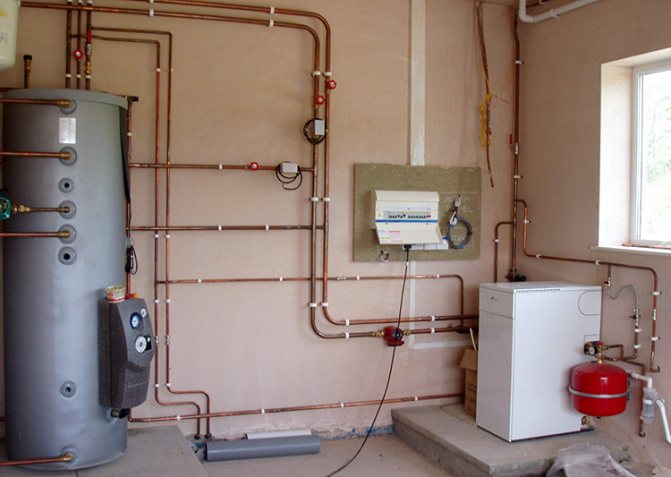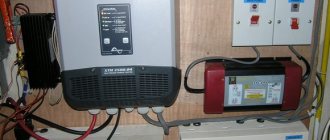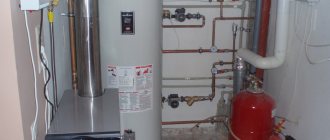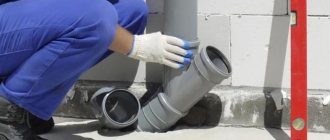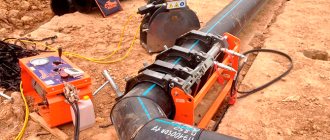Every motorist knows that with the onset of cold weather, ignition problems are quite likely. Moreover, the lower the temperature outside, the greater the likelihood of such problems. This is primarily due to the fact that in the cold, the actual battery capacity is significantly reduced compared to the nominal. That is, if the battery is fully charged, then after spending the night in the cold, depending on the temperature, its charge may drop to 50%, although it will recover again after warming up.
That is why it is worth remembering that the battery is also a part of the car that needs care and which has its own requirements for operation. Let's take a closer look at the features of battery operation in winter.
Engine starting
.
There are few basic rules that will help to avoid problems with starting the engine, but they must be followed strictly - everyone knows how unpleasant it is to try to start a car while sitting in a frozen cabin overnight, and then carry the battery home so that it recharges and warms up.
First of all, you need to monitor the battery charge level. If you parked your car and saw that you were half charged, you can be sure that by the morning a maximum of a third of the charge will remain, or even less. Therefore, you need to plan your travel schedule so that at the end of the day the battery is fully charged.
In the event that an alarm is not installed on the car, you can reset the terminals from the battery - this way you can reduce the level of its discharge at night. At the same time, do not forget that this method is not always suitable for owners of cars equipped with on-board computers.
If you cannot start the engine, but the battery charge level is sufficient, it makes sense to slightly "warm up" it. To do this, it is enough to turn on the high beam for a few minutes - thus, the battery terminals will warm up, and the electrolyte will become less viscous. Of course, this method is not a panacea, but in some cases it can help.
Is it worth insulating the battery
?
Many car owners insulate the battery with felt or other materials at hand. This solution to the issue has both positive and negative sides. Felt has good thermal insulation properties, it does not allow the battery to cool down quickly, but also does not allow it to heat up quickly, therefore it is not always effective.
Do not forget that the lower the electrolyte temperature, the worse the battery perceives the charge. It makes sense to use battery insulation in cases where you have to make small (no more than one or two hours) stops and turn off the car. If you need to leave the car overnight, then no insulation will help keep you warm for such a long period.
It also makes sense to insulate the battery if you have a long trip in low temperature conditions (below -25). In such extreme conditions, the battery can cool down on the go, which can lead to disastrous consequences, even if you just turn off the engine. Once it has cooled down a little more, it will no longer be possible to start the engine.
What to look for
?
First of all, the battery must not be discharged - the minimum charge level in the cold season should not be lower than 25%. Otherwise, there is a risk of rapid deterioration of the battery. The second point is that you need to monitor the electrolyte level.
If necessary, you need to add distilled water, but then immediately put the battery on charge - at sub-zero temperatures, the water will freeze, without having time to mix well with the electrolyte.
In winter, it is cold not only for living beings, but also for technology. Dampness, frost, cold piercing wind, icing affect the operation of technical devices. Dampness and frost significantly increase the stress on car batteries. In winter, the car needs to consume more electricity when the headlights, dimensions, heated windows, seats, warm air in the cabin are involved. As a result, the battery does not have time to charge it remains in the cold at night, while the car refuses to start in the morning.
Battery storage
Winter divides motorists into two groups. The first includes those who continue to operate their car even after the onset of cold weather. And the second group consists of people whose cars spend the winter in garages or even just on the street. If you belong to car owners of the second group and are going to close your iron friend in the garage until spring, then it is recommended to disconnect one of the battery terminals. Then it is discharged very insignificantly and you will not need to recharge it. But with the onset of severe frosts, in order for the battery to stand all winter without problems, it is better to remove it altogether and bring it into a warmer room, unless, of course, your car does not winter in a heated garage. How to save your battery in winter:
Storage conditions are different for dry-charged or electrolyte-filled batteries. With a dry-charged battery, it's somehow easier. The most important thing here is that it is stored in a dry and well-ventilated area. Direct sunlight is harmful to him. If they hit the case, they can damage the plastic. A dry-charged battery should be left for storage, making sure of its tightness and tightness of the plugs on the cans
Make sure the battery is not damaged. Like a dry-charged battery, a battery filled with electrolyte must be stored upright
It is impossible to drain the electrolyte during storage - you risk being left without a battery at all. After removing the battery filled with electrolyte, clean its body from dirt, especially from traces of electrolyte. When the level of electrolyte in the cans drops, you need to top it up to the set level. Distilled water should be added. Do not use acid or water from the mains for this, it is a death sentence for the battery. After refilling, the battery is fully charged. The battery should be recharged periodically during storage so that it does not completely discharge.
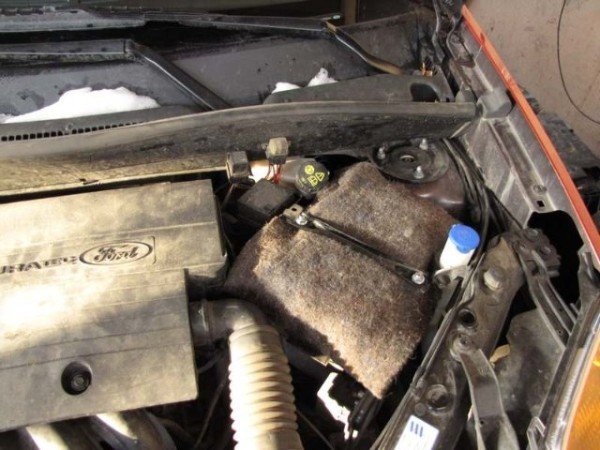
Craftsmen are trying to protect the battery from frost in various ways.
There are situations when a motorist does not have the opportunity to check the safety of the battery and recharge it until the very onset of heat. In this case, boric acid, or rather its 5% solution, will help. After completing all the procedures, namely topping up the electrolyte to the set level and charging the battery to the maximum, you need to drain the electrolyte solution within 15-20 minutes. The next step is to thoroughly rinse the battery with distilled water. You will need to wash it twice, holding the distilled water in the battery for about 20 minutes. And now you can pour a solution of boric acid into a clean battery. It remains only to wipe the battery and put it away for storage. It is worth remembering that with this method of storage, the temperature in the room should not fall below 0 ° C so that the solution does not freeze. The use of this method will completely exclude the possibility of self-discharge of the battery during the entire storage period. When you need to use the battery after winter, you will need to carry out a few simple procedures to "wake up" her. Within 15-20 minutes, the boric acid solution is drained. The electrolyte is immediately poured. After 40 minutes, the density of the electrolyte should be checked.If it has not changed, you can install the battery in the car. When the density decreases, it will be necessary to bring it to the required level.
Accumulator charging
(Charging the maintenance-free battery)
Replacing the battery in the DVR. Step by step, do it yourself
* more fully ways to charge car batteries are described on the page
1. The battery is charged with a current of 3.5 - 4 A. Continue to charge the battery with this current until an increase in the density of the electrolyte is observed. You can stop charging the battery four hours after the last increase in density. 2. Alternatively, the 1.5 A battery can be charged safely overnight. 3. Charging too fast, allowing the battery to fully recharge within 1 to 2 hours, is not recommended as this can cause serious damage to the battery plates due to overheating. 4. When charging the battery, make sure that the electrolyte temperature never exceeds 37.8 ° C.
Maintenance-free battery:
1. A full charge of this type of battery takes significantly longer (up to three days with significant discharge). 2. A charger with constant voltage is required for charging. After connecting, the device must be set to a voltage of 13.9 - 14.9 Volts at a current below 25 A. With this method of charging, the battery will be usable after three hours, giving out a voltage of 12.5 Volts. Such a charge period is realistic if the battery is only partially discharged, a full charge takes much longer. 3. If the battery is being charged from a completely discharged state (voltage below 12.2 Volts), entrust the charging to a workshop, as this process requires constant supervision by a specialist.
Official recommendation for charging Varta batteries:
It is recommended to recharge the battery before installing the battery on the vehicle! It is recommended to charge at a constant current equal to 1/10 of the battery capacity. The charge is considered complete 2 hours after the battery voltage reaches 16.0 V.
Manufacturing
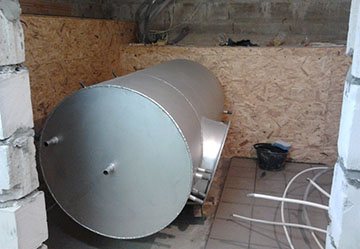

So, consider how to make a heat accumulator for heating boilers with your own hands. The easiest way to make a TA is from a finished steel barrel.
In the absence of such, the container will need to be welded from steel sheets. It must withstand the pressure for which the boiler heat exchanger is designed (usually 3 atm).
The location of the fittings depends on the connection diagram. If the TA is connected as a hydraulic divider, then at the top and bottom it will be necessary to cut two fittings into it, the length of which must correspond to the thickness of the insulation.
One pair (top + bottom) cuts in from the side of the boiler, the other from the opposite (here the heating circuit will be connected). Tees with thermometers will need to be connected to the lower nozzles.
The barrel is wrapped in foil, and then with insulation. As the latter, a material should be used that does not emit toxic fumes when in contact with hot surfaces.
Polyfoam does not satisfy this condition - you will need mineral wool, and one that does not contain phenol-formaldehyde resins as a binder. Such insulation (basalt wool) is produced for thermal insulation of chimneys.
It remains to close the container upholstered with a heat insulator from the outside with a casing made of sheet metal or sheet steel.
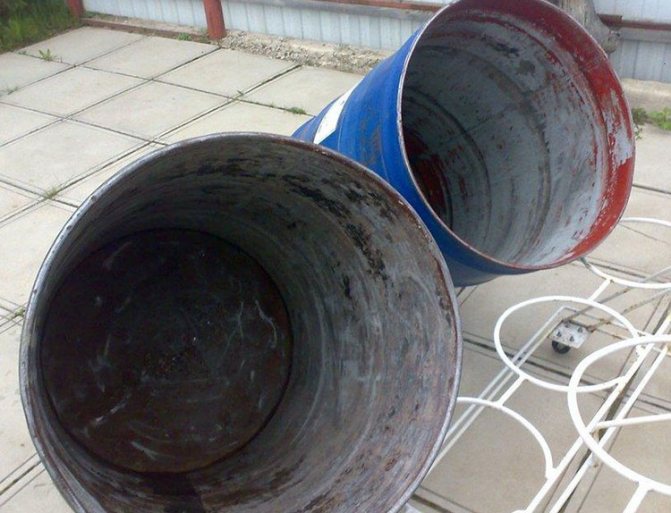

Heat storage from a barrel
If the TA is supposed to be used in parallel for preparing hot water, it must be equipped with a coil. The latter is made from a copper pipe with a diameter of 20 mm.
A safety valve must be installed in the container lid to relieve excess pressure.
To ensure that CO is safe from freezing during a long idle time of the boiler, install an electric heater (TEN) in the upper part of the TA with a thermostat set, for example, to a temperature of 40 degrees.
Battery insulation methods
DIY car battery terminal repair
You can often find advice on the comprehensive insulation of the entire "podkapotka", but this is not economically justified. The pluses of such an event include:
- Insulated radiator, the engine will "thank" you during operation, for it it has a positive effect on work.
- In addition to the engine, the fuel system, the starter are in a heated state, all this cools down rather slowly and for a long time, which subsequently affects the ease of starting.
- The battery, due to the single insulation with the motor, will freeze less, which means that the likelihood of starting the car in the morning increases.
Comprehensive car insulation
The car must be insulated in the following sequence:
First of all, pay attention to the radiator, initially you need to insulate it. If there is no special material, you can make insulation from ordinary cardboard.
The main thing is to install it correctly, that is, you need to close the pipes from hypothermia. Then we insulate the engine, for today there are a huge variety of all kinds of "blankets" on sale, even for different motors and models. Or you can simply buy the required piece of insulation yourself and cut the required piece. With the help of it, either the motor is covered or is attached to the hood. After that, a heater for the battery is made from the same material, it is better to leave one side from the engine side removable so that the battery can be warmed up while the power plant is running.
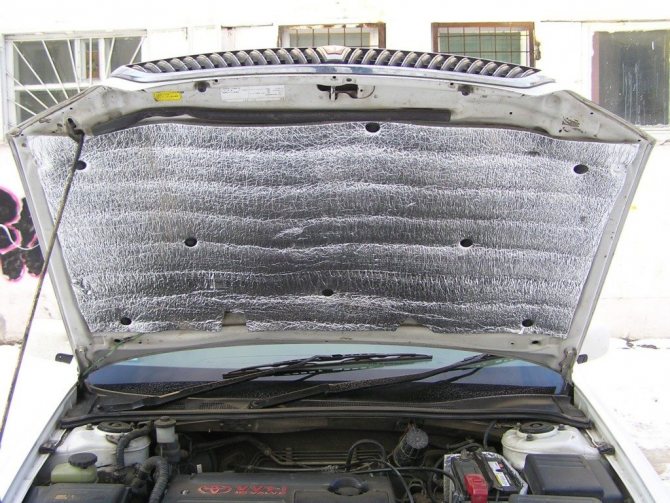

How to insulate the heat accumulator
Even when the tank is in a warm room, the temperature difference between the air and the coolant is too great - from 50 to 70 ºС. In order not to lose heat and not to heat the furnace room with it, it is imperative to insulate the heat accumulator. The easiest way to do this is using foam with a thickness of 100 mm and a density of 25 kg / m3. It is easy to glue it to metal walls and cut holes for pipes.
Mineral wool of the same thickness is also suitable for insulation, although it is somewhat more difficult to fix it. The density of the material is 135-145 kg / m3. For round tanks from barrels, you will have to use roll insulation of the ISOVER type, here you will have to tinker a lot with the fasteners, especially in the lower part of the tank.
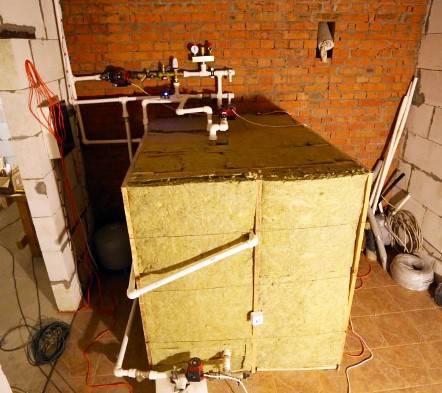

The video below shows the installation and diagram of the heat accumulator with its connection to the boiler and heating system:
Related article: How to make heating in a private house - a detailed guide
Rating of the best heaters
Do-it-yourself battery indicator controller
First of all, we will discuss heaters for the engine, since they are the more popular products than their counterparts for the radiator and battery. According to the reviews of motorists on the Internet, the most common trademarks under which these products are produced are TORSO, STP HEATSHIELD, SKYWAY, Avto-MAT and Avtoteplo. They will be discussed further.
Car blanket TORSO
A distinctive feature of the TORSO car blanket is its low price. For example, a product measuring 130 by 80 cm as of the beginning of 2020 is about 500 rubles. However, a significant disadvantage of this product is the lack of official certification. Car blankets are available in various sizes, so they can be used on both small cars and crossovers and SUVs. The warranty period for this car blanket is 3 years. The weight of a product measuring 130 by 80 cm is 1 kg. The article number is 1228161.
Insulation STP Heat Shield
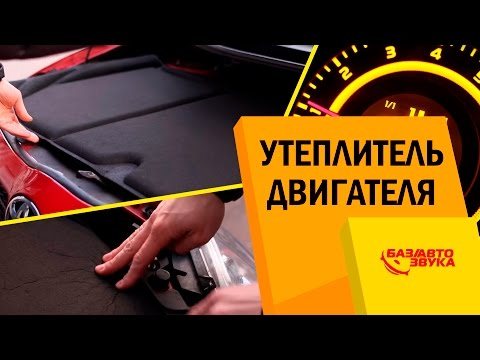

StP HeatShield engine insulation
The STP Heat Shield car blanket also comes in different sizes for both passenger cars and SUVs.For example, there are sizes 600 by 1350 mm, 800 by 1350 mm and others. A distinctive feature of these products is the presence of not only heat, but also sound insulation. Also in the summer, the protection can be used between the engine and the passenger compartment, which reduces the noise load in the passenger compartment. The blanket consists of the following materials:
- non-woven fabric resistant to oil, fuel and other process fluids;
- noise and heat absorbing layer;
- an adhesive layer that is resistant to high temperature extremes and serves as a mechanical basis for insulation.
The product is attached using the included 8 clips. They can be used to secure the blanket in the summer. In winter, it can be laid directly on the engine housing. The cost of both these models is approximately the same and is about 1000 rubles.
Skyway car blanket
11 models with different dimensions are produced under this brand. The peculiarity of the products lies in the excellent ratio of price and quality. According to many car owners, the blanket works for about 2.3 years without loss of performance
The conditional disadvantages include the easy possibility of damage to the surface of the product, which is why it is necessary to install the insulation carefully so as not to damage it. Despite the differences in size, the price of heaters is approximately the same and amounts to 700
800 rubles as of the beginning of 2020.
"Machine"
Under this brand, two types of car blankets for the engine are produced - A-1 and A-2. Both models are similar to the products described above. They are non-flammable, non-conductive, resistant to acids, fuels, oils and various process fluids used in a car. The difference between them is the maximum temperature. In particular, model А-1 can withstand maximum temperatures up to + 1000 ° С, and А-2 - + 1200 ° С. There is also a model A-3, designed for battery insulation. Its properties are similar to the first two. It differs only in size and shape. The price of an auto blanket for the engine as of the beginning of 2020 is about 1000 rubles apiece.
"Avtoteplo"
This is the most famous and popular blanket among domestic motorists. Its distinctive feature is the fact that the manufacturer positions it as a heater for the engine compartment, and not as a heater for the hood. The product can be used at temperatures up to -60 ° С, while it prevents icing of the engine starting mechanisms. Insulation "Avtoteplo" is a fire-safe product, and is able to withstand temperatures up to + 1200 ° С. The car blanket is not afraid of moisture, oil, fuel, acids and alkalis. It has a significant service life and can be used with both passenger cars and trucks. According to the reviews of motorists, it is best to buy an appropriate car blanket, produced by a company from Chelyabinsk with the same name "Avtoteplo". Also, when buying, check the availability of all permits and a passport for both the purchase itself and the product. The price at the beginning of 2020 is about 1,500, 2,000 rubles, depending on the size. Blanket article number 14 - AVT0TEPL014.
Unusual ways to insulate the battery
Interesting insulation methods include:
- "Chill";
- onboard network;
- nichrome thread;
- factory insulation.
Heating "chilled"
Many people know how the engine is heated - by circulating antifreeze through special channels. Here we will consider a similar system, when a branch is made from the stove, or from another place. Several or one tube is made from it, encircling the battery. There is a simultaneous heating of the antifreeze and its circulation around the battery.
Such a system is very rare; additional work is required to lay the pipeline. Moreover, removing the battery will be laborious.Moreover, in this way, it is quite likely even to overheat the battery. In this case, the electrolyte will boil, and the subsequent actions are simply not realistic to predict, given its explosive properties. You can, of course, protect yourself, carry out additional insulation, but in our experienced opinion, this work is not worth the "candle".
Heating by means of the on-board network
In this way, you need to make parallel circuits. Keep in mind that in each circuit, the resistor is in series. The resistance will depend on the expected temperature and current. Thus, energy costs will increase and thereby increase heating.
There is also a significant drawback in this method, namely, during the night of such work, the battery will simply "run out". Therefore, there is no sense in such a "design", unless, of course, the car is constantly in a running state. Or you can solder a controller that will disconnect the network when the voltage in the battery drops below 12 V. In this case, you will have enough capacity to start.
There is also another option, namely, "powering" does not come from the main battery. That is, power is taken from the second battery. For this, a regular AGM from an uninterruptible power supply is suitable. In addition, if you have skills in electrics, you can be so "confused" that you put the second battery on charge from the generator.
Heating with nichrome thread
The principle is generally similar to the previous method, but here a nichrome thread is used as a heater. Instead of resistance, it is wedged into the circuit. It can even be used in some kind of wrapper. By the way, such threads are often used to heat the steering wheel, seats, so finding them is not a problem.
Dimensions, cross-section are selected depending on the power of the heater. The increase in power occurs by increasing the number of threads around the battery.
Factory insulation
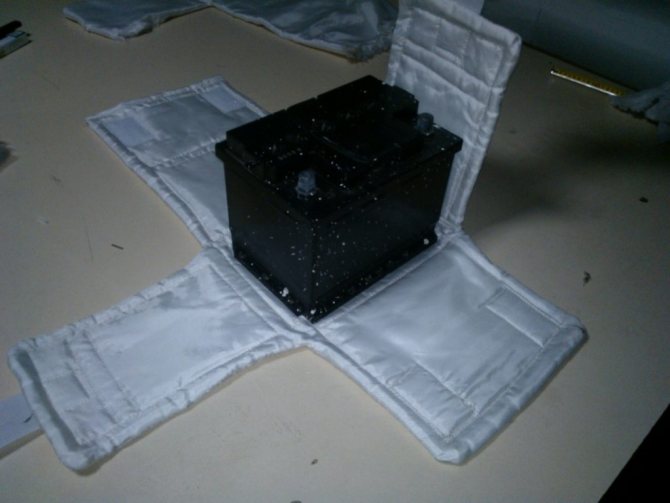

Often they differ only in better quality performance, but, in fact, they have similar schemes with a combined mode. That is, there is thermal insulation, threads or chains inside. The wires are brought out from the heater, which can be "light" in the car or connected to a backup battery. As already mentioned, you can use no chrome threads, either in a combined way or separately.
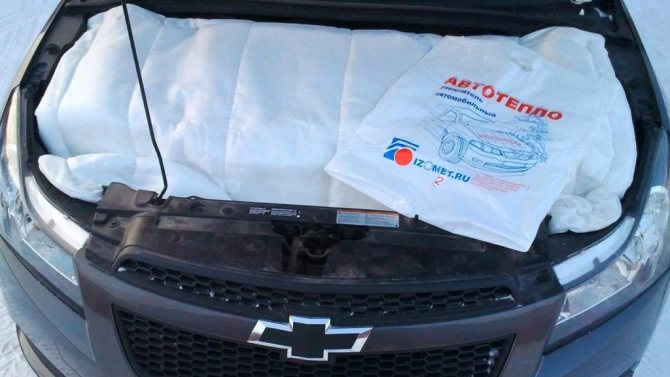

Do it yourself
For the design of the installation, steel drums or ordinary steel sheets can be used. The shape of the tank can be either cylindrical or square. But before proceeding with the manufacture, it is necessary to carry out calculations of volumes, power and thermal insulation.
To find out the volume of the tank, you need to calculate how much liquid should be in the heat accumulator. We use the following formula:
m = Q / (c * ∆T)
where: Q is the heat consumption in the entire system, kW;
c - heat capacity of water, which is 4.187 kJ / kg ºС or 0.0012 kW / kg ºС;
∆T - The difference between the maximum and minimum temperature of the liquid in the tank and the pipeline ºС.
Example! For a room with an area of 100 m2, an average of 10 kW of heating power is required per hour. For 8 hours of downtime of the heat generator, you will need to accumulate 80 kW. The maximum water temperature is 90 ° C, and the minimum is 50 ° C. We substitute the data into the formula: m = 80 / (0.0012 * (90-50)) = 1667 kg.
From this it follows that the approximate volume of the tank should be 1.7m3. Such a tank will provide the heating system with a flow with a temperature of 50 ° C for 8 hours. Then the room will gradually cool down and after 3-4 hours the battery will be completely discharged.
Important! In order for the device to have time to fully recharge during the operation of the boiler, it needs to have an additional power reserve.
Calculation of the thickness of the heat insulator directly depends on the power that is needed to heat the boiler room. Thermal conductivity of insulating materials is 0.040 W / m ºС.
We find out how much heat will penetrate into the boiler room, use the formula:
q = S * (Tmax-20) * L / d, (W)
where: S is the surface area of the tank without a bottom, sq.m .;
Tmax - maximum water temperature, ºС;
20 - indoor air temperature, ºС;
L - thermal conductivity of insulating materials, W / m ºС;
d is the thickness of the heat insulator, m.
Formula for the surface area of a tank without a bottom:
Sс = m / h (sq.m.)
where: Sos - the area of the base of the tank;
d - circle diameter, mm;
h - tank height, m.
Example! If the height of the tank is 2m, then Sos = 1.667 / 2 = 0.834 sq. m. A circle with a radius of 1030 mm will have such an area. Hence S = 0.834 + 3.14 * 1.03 * 2 = 7.30 sq. m.
Using a heat insulator with a thickness of 0.1 m, 204.4 W of heat will be supplied from the heat accumulator to the boiler room.
q = 7.3 * (90-20) * 0.040 / 0.1 = 204.4 W
If this indicator is not suitable, then the thickness of the insulation must be reduced.
Required materials and tools
For the manufacture of a heat accumulator, you will need a container with a volume of more than 150 liters. It is somewhat problematic to make such a container on your own, but it is possible. Alternatively, Soviet-made tanks made of stainless steel can be used.
They were previously used by canteens to heat water. And if you didn't get such a rarity, any steel containers with a wall thickness of 5 mm or more will do. The most affordable option is a barrel.
For work you will need materials such as:
- a tank with a capacity of more than 150 liters;
- thermal insulation material;
- copper pipes with a diameter of 20-30 mm (coil) or heating elements;
- thermometer;
- branch pipes;
- fasteners for a thermometer and a coil (heating element);
- electric heater with a capacity of 800 W and a length of approximately 2 m.
- welding machine;
- instruments.
Several materials can be used as a coolant for the device, the heat capacity of which is presented in the table:
| Liquid | Heat capacity, J / kg * K |
| Ammonia | 4730 |
| Water | 4200 |
| Glycerol | 2660 |
| Ethylene glycol | 2300 |
| Kerosene | 1950 |
| Machine oil | 1800 |
Based on these data, the most accessible and effective material is water.
Manufacturing
Let's consider in more detail how to build a storage tank from a barrel. Stages of device installation:
- Select barrel the required volume.
- Clean it up, remove dust and debris, get rid of corrosion.
- Strengthen the barrel from the outside with stiffeners (especially when the heat accumulator is designed for more than 5m3).
- The bolts must be welded flange the size of the cover.
- Increase cover thicknessby welding stiffeners to it.
- Sand the inner surface of the barrel, and then treat with phosphoric acid. After that, prime the surface 4-6 times and cover with several layers of heat-resistant paint.
- Weld inside the heating element or coil and make holes for the pipes.
Important! If opportunities permit, powder coating can be used instead of the standard paint system. It should be covered with it after installing the coils. This method allows you to achieve the same thickness of a layer of heat-resistant polymer, which perfectly protects against corrosion processes. - Weld on the pipes, check the tightness of the installation, inspect the coil and all seams, holes and the surface of the tank itself.
- Make an outer cylinder.
- Grind, prime and process with silver the surface of the barrel outside.
- Wrap the barrel with aluminum foil, and then insulate with mineral wool.
There are several safety requirements for self-made installations:
- Contact of hot parts of the unit is prohibited. with flammable and explosive materials.
- Due to the high internal pressure and closeness of the system, it is necessary to ensure maximum tightness, mount stiffeners and special rubber gaskets for the cover.
- In the case of using additional heating in the form of heating elements, it is necessary to insulate all contacts and make grounding for the tank.
How to keep the battery warm in winter if the car has been parked for a long time
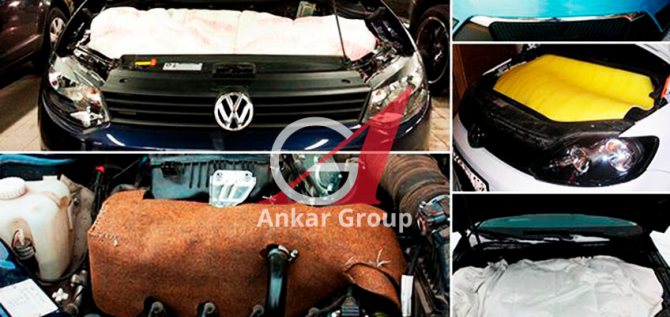

The above methods work well if the car is not idle for a long time. The fact is that this kind of insulation has disadvantages:
- Keeping warm for a long time will not work. If you leave the car overnight, even with insulation, the battery will still cool down. Keeps warm for an average of 4 to 8 hours.
- Due to this kind of insulation, the heat from the car engine does not come. As a result, the battery will still freeze and discharge.
We repeat once again, the battery insulation by various wrapping methods works only if the car is used regularly and without interruption.
What then to do, and how to insulate the battery for the winter with your own hands, if the car is idle at night and trips are not frequent?
Thermo blanket. Thermal insulation of the battery with the engine
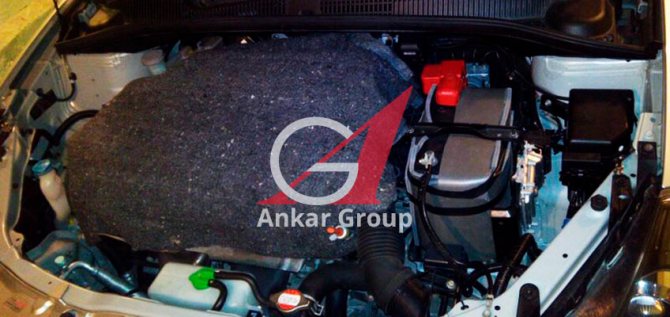

Many drivers speak positively about this method, because it is the most practical and efficient. It also keeps the engine warm.
You can sew a special cover yourself, or you can purchase it at a car dealership. It covers the engine and battery, which is why the battery, being next to a warm engine, does not have time to cool down.
You should also cover the radiator with cardboard so that the oncoming cold air does not enter, this will give additional protection. And the battery itself is insulated
It is very important here that you do not need to insulate the side facing the engine. Warm air must flow from the motor and warm the battery
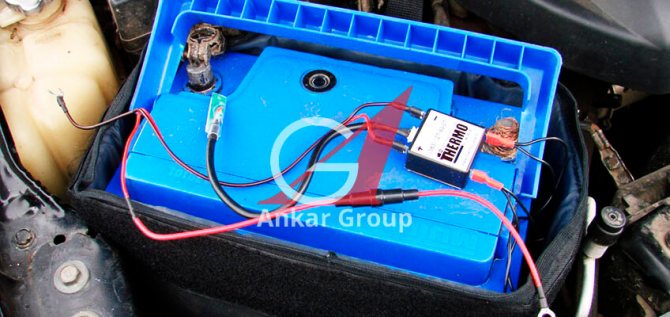

In a car dealership you can find on sale a thermo case for a heated battery. The heating elements keep the battery at the optimum temperature.
The principle of its operation is as follows:
- The battery is placed in this case.
- When the engine starts, the plates begin to heat the battery up to 25 degrees.
- When stopped, the heating stops, and the thermal case itself retains heat, reducing heat loss.
Such thermal protection for the battery against frost is very effective, because In this case, the battery cools down longer than usual.
On the Internet, you can find many ways to insulate a battery for the winter with your own hands. Each has its own pros and cons. Remember that these methods are only suitable if the car will not stand in the cold for a long time. Avoid frequent and short trips in cold weather, drive a sufficient distance so that the battery has time to warm up and fully charge, this is the only way to ensure an easy and stable engine start even in the most severe frost. Otherwise, it is better to use special heaters or auto start of the car engine.
How to make a battery insulation on a car with your own hands?
Posted on March 2, 2018 by generator-prosto. No comments yet
Winter this year comes into its own early and motorists have already started having problems with starting the engine in the morning. The battery stays in the cold all night, and if it is discharged, then the power for the starter may not be enough. And the real cold is yet to come. What to do? Again you will have to take the battery home at night or in the morning look for someone to light the car from. There is an alternative in the form of battery insulation. How effective is it? Today we will try to figure it out. Consider factory samples of heaters, as well as DIY options.
Advantages and disadvantages of auto blanket
The experience of using insulation for a car goes back to the old days, when cars were carbureted, and 76 gasoline was widely used. Naturally, such cars warmed up very slowly in frost, and cooled down, accordingly, quickly. However, these times are long gone, cars became injection cars, and gasoline became more high-octane. Accordingly, less time is spent on heating them.
Currently, there are three types of heaters - engine, radiator and battery. Let's start our review with the most common one - the "blanket" for the engine.The advantages of using it are as follows:
- The engine warms up faster at negative temperatures. This fact is provided by the effect of a heat shield, which prevents heat from the engine from rising up and spreading through the engine compartment and heating the hood.
- After stopping the power unit, the latter remains warm for a long time. This becomes relevant in case of short stops, then it is easier and easier to start the car.
- Thanks to the use of insulation for the car hood, the warm-up time is reduced. This follows from the first item on this list.
- If the car is equipped with auto-heating by temperature, the number of engine starts per night is reduced by 1.5. 2 times (for example, from 5 to 3).
- No ice build-up on the bonnet. This becomes possible due to the fact that the heat from the motor does not heat it up, and, accordingly, moisture from the outside does not crystallize.
- The insulation slightly reduces the noise load both inside the car and outside.
Before describing the shortcomings, it is necessary to clarify several nuances on which they may depend. In particular, the insulation works differently with turbocharged and atmospheric engines, at different temperatures (for example, -30 ° and -5 ° C), under different driving conditions (in the urban cycle and on the highway), when air is taken from the radiator grill or from the engine compartment. The combination of these and other objective conditions gives a different result of using car blankets for engines, batteries and radiators. That is why often such blankets can lead to the following troubles:
- overheating of the engine, which in itself is bad, and can threaten the failure of its individual parts;
- at a relatively high temperature (about -5 ° C ... -3 ° C), ignition coils and / or insulation of high-voltage wires may suffer;
- if warm air enters the system, there is a risk of late ignition, which may increase fuel consumption;
- as a rule, when using a heater for a car, the engine power drops, of course, fuel economy is out of the question;
- when buying a low-quality blanket for the engine, it may catch fire !;
- most modern heaters for a car battery, its engine or radiator have a short service life - about one to two years.


Should I use a car blanket
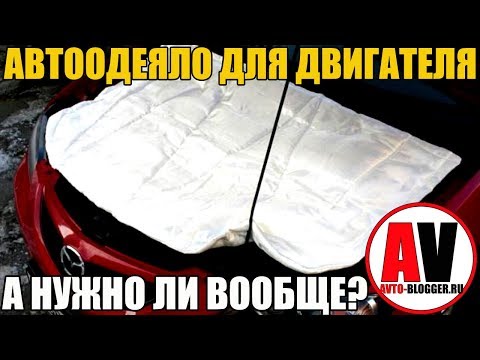

Thus, the decision on whether to buy engine insulation or not to do it depends on many factors. In particular, if you live in latitudes where in winter the temperature drops to -25 ° C and below, and at the same time the engine on your car warms up for a long time, then yes, it makes sense to think about buying. But if the temperature in winter in your area rarely drops below -10 ° C, and at the same time you own a modern foreign car with a good heating system, then you hardly need to worry about a car blanket.
Heat accumulator application
The storage container with water is used for houses with intermittent heating, namely:
- For electric boilers equipped with a multi-tariff meterwhich operate economically only at night (the cost of electricity at night is 3 times cheaper than during the day).
- For solid fuel boilers that stop working at night due to the need for periodic tossing of firewood or coal.
The use of such installations in the system not only prolongs the period of its operation, but also performs a number of other useful functions.
How to use the battery in winter
Subzero temperatures greatly affect battery performance. In extreme cold, the electrolyte thickens, which complicates the chemical processes of the battery itself. This leads to a decrease in current generation and affects the start of the engine in cold weather. For low temperatures, there are electric accumulators with a large capacity, for example, 10 ampere-hours.
There are special heaters for the battery
In off-road conditions, the battery is subject to constant shaking. Electrolyte begins to escape from the plates, increasing the chance of a short circuit. For such needs, there are special batteries that have plates of the same polarity rolled into a separator.
Frequent use of the starter drains the battery, creating the risk of running out of power at the most inopportune moment. The problem can be partially solved by replacing the battery with an analogue, which has a self-charging function and is equipped with a plastic separator envelope.
Calcium batteries withstand temperature changes better
The above-described calcium batteries perfectly withstand both low and high temperatures, can be stored for many months without use, and are installed as easily as conventional batteries without needing to be recharged. However, most drivers will continue to use the alkaline batteries they are accustomed to. There are two rules for their operation:
- Monitor the battery charge level;
- Check the electrolyte level - it should cover all cells. Always have distilled water with you, because electrolyte tends to evaporate both in summer and winter.
Preparation
- Stock up on containers for draining the used electrolyte and diluting a new one;
- Test the plastic for electrolyte resistance before use.
To raise the density of the electrolyte you need:
- container with measured marks;
- hydrometer;
- soldering iron;
- electrolyte;
- enema pear;
- storage water;
- drill;
- distilled water.
We measure the density in each jar. If it is 1.25–1.28, and the spread is not more than 0.01, then the battery is normal and can be used. If the indicators fluctuate at the level of 1.18-1.20, then you need to add an electrolyte with a density of 1.27.
- Pump out the largest possible volume of old electrolyte from the can with an enema and measure it;
- Pour in a new solution at the rate of half of the pumped out;
- Gently shake the battery to mix liquids;
- Measure the density - if the value is insufficient, you need to add more electrolyte;
- Fill the remainder with distilled water.
Battery behavior during temperature changes
As you know, the battery carries very strong loads, in addition, during temperature extremes, they are even more intensified. Depending on the weather. For example, in the summer season, the temperature of the "engine compartment" may well reach 100 degrees, and in the winter it can drop below zero. During the operation of the motor, the battery, due to its close proximity to the heat source, in the particular case, this is the engine, heats up quite strongly, this is especially noticeable in winter.
During a stop, parking, the battery is compared in temperature with the environment, and this threatens that at some point you simply will not be able to start the car. It is known that even a small drop in temperature, say by 1 degree, "steals" from your battery about 1 mAh. This leads to the fact that you have much less capacity and, accordingly, attempts to start the engine. And given the fact that after a long stay (at night) in frost, the oil thickens, more energy is required for scrolling, and where does it come from if the capacity falls.
A more global problem lies in wait for the owners of diesel vehicles. The constant lack of energy in city driving is also added. As a result, getting up in the morning, you find a completely discharged battery. Keep in mind that if the frost is strong, with a discharged battery, the electrolyte may simply freeze. To try to avoid such embarrassment, it is better to keep the battery warm or take all measures to insulate the car battery with your own hands.
Policy by SMS
“1600 rubles. OSAGO ". A couple of days ago, an SMS with such a short text from an unknown number came to my mobile. I am calling by the phone number indicated in the message. A girl picks up the phone.
"Hello.I would like to know about the CTP policy, ”I am interested.
“We sell blank forms without payments,” the interlocutor immediately brings me up to date.
"Doesn't matter what car?" - I am surprised.


"No difference".
What is the bottom line
We add that additional insulation in severe frosts does not allow the hood to freeze with the engine running and after it stops. This means that freezing rain or snow that falls on the hood will quickly melt and evaporate. In other words, a thick layer of ice does not form on the hood, which has a positive effect on the state of the paintwork (paintwork) on the hood surface, taking into account the absence of mechanical effects of ice and cracking of the coating during temperature changes.
- It should also be noted that it is possible to insulate the engine compartment of a car with the help of fireproof materials in a comprehensive manner. To do this, you need to close all the slots through which outside air enters under the hood. Work of this kind will require the owner to dismantle individual elements that are installed on the engine itself, as well as body parts (front fenders, head optics, front bumper, etc.).
- When installing the insulation, individual parts should be securely fixed, since tearing off the thermal insulation in motion can lead to damage to the engine or attachments. Adding thermal insulation to the cooling fan, drive belts, rollers or pulleys increases the risk of serious failure.
- When preparing the car for winter, remember that the engine runs on flammable fuel, there is electrical equipment under the hood. For this reason, the use of flammable materials and solutions that tend to accumulate static electricity are not allowed. Before installation, you should carefully study the properties of the insulation used. During placement, the thermal insulation should not come into contact with those elements of the internal combustion engine that get very hot during the operation of the unit (exhaust manifold, other parts of the exhaust system).
Separately, we note that during the complex insulation of the hood and engine compartment, the possibility of average daily temperature fluctuations should be taken into account. In other words, a change in the outside temperature from minus to plus can lead to overheating of the thermally insulated engine without any outside air flow to the radiator.
For this reason, in the area of the radiator, it is necessary to realize the possibility of quick removal of the insulation and simple re-installation if necessary. In parallel with this, the element must be securely fixed in the desired position, regardless of whether the insulation is open at the moment or the radiator is completely closed for air flow. And lastly, during the placement of the heat-insulating material, it is advisable to take into account the possibility of subsequent easy dismantling without the risk of damaging any elements under the hood, breaking various fasteners or scratching the paintwork.
Principle of operation
Drawing an analogy with the Russian stove, it is easy to guess that the solid term "heat accumulator" simply means a large volume of some material with a significant heat capacity. In water heating systems, it is most logical to use the coolant itself in this capacity - the heat capacity of water is quite large.
So, a heat storage device is a large container enclosed in a heat-insulating shell and filled with water. Different schemes for connecting such a device are used, but the principle of its operation remains unchanged: due to the excess heat produced by the boiler, the water in the TA heats up to a high temperature and subsequently the accumulated heat is gradually taken into the heating system.


The scheme of work of the heat accumulator
In addition to its main function, TA can play the role of a water heater, for which it is enough to build a coil inside it. True, it will not work to get hot water in large volumes with its help.
The TA can be charged not only with the help of a boiler, but also with a solar collector - for this, a coil must also be built into the container through which the heat carrier heated by the sun will flow.

